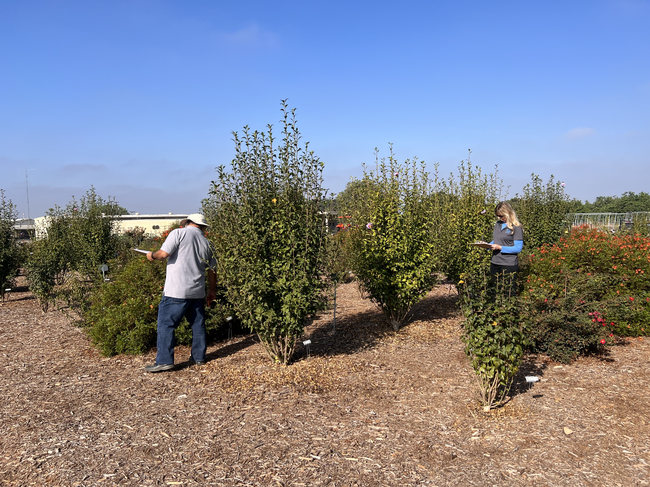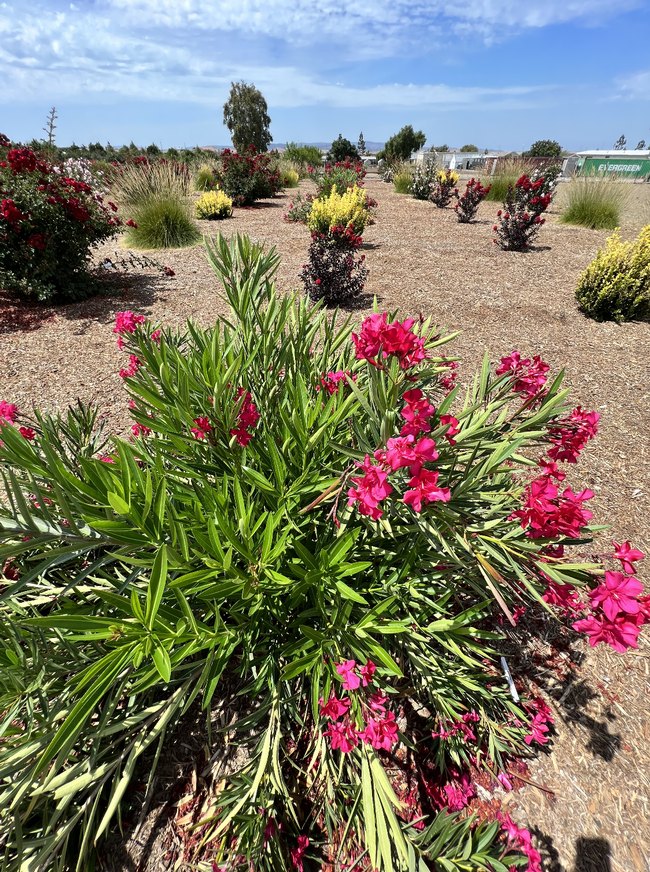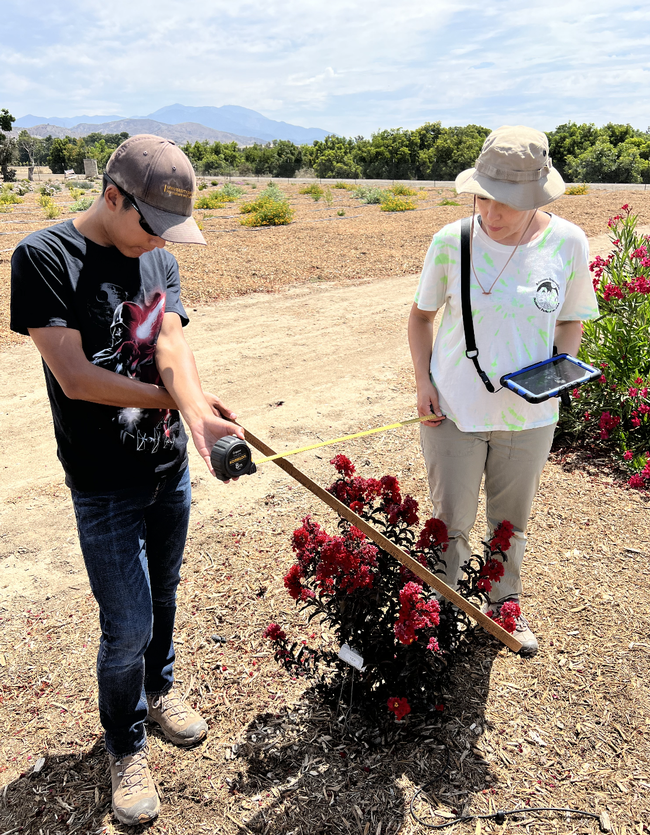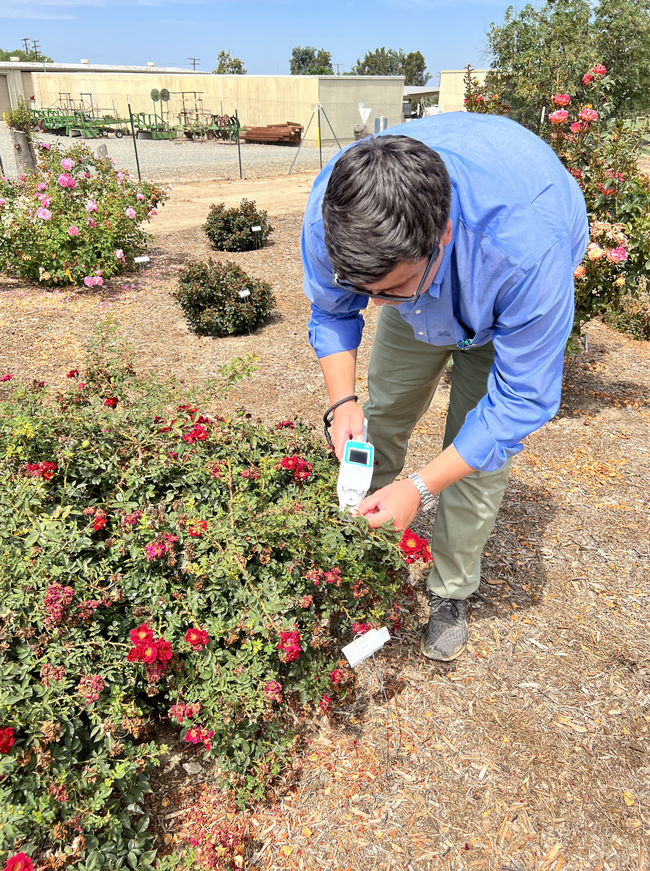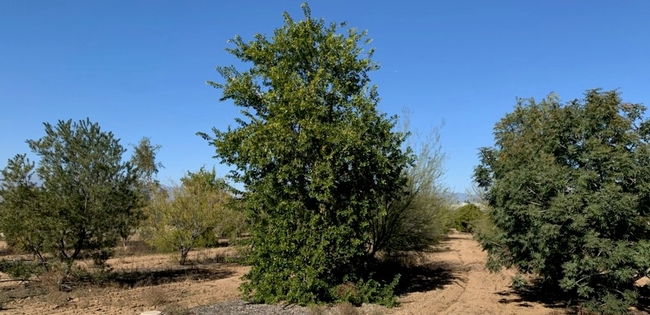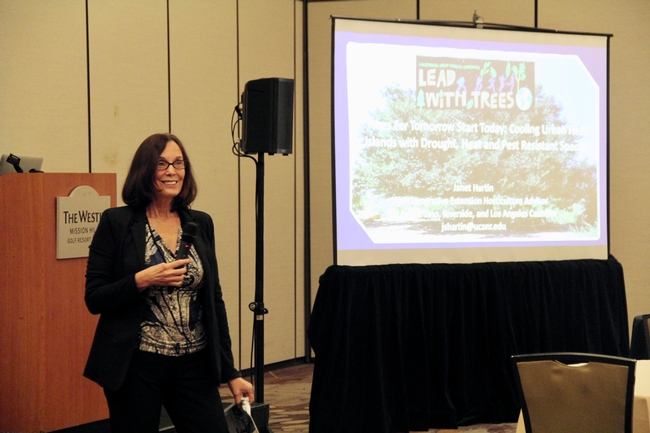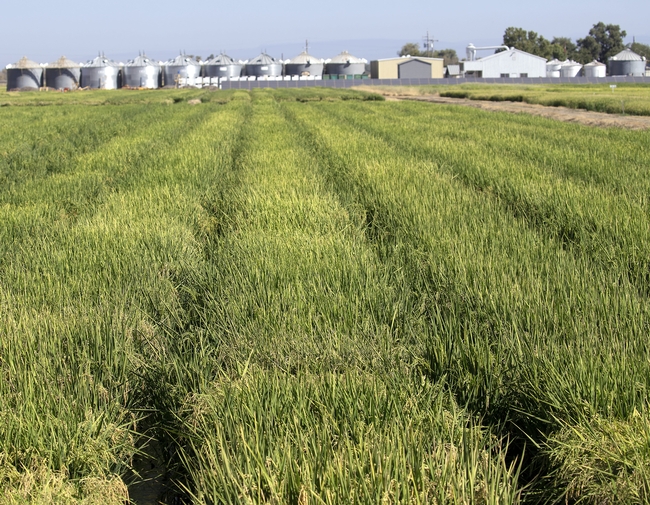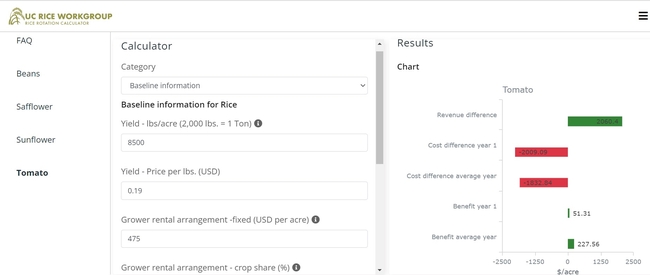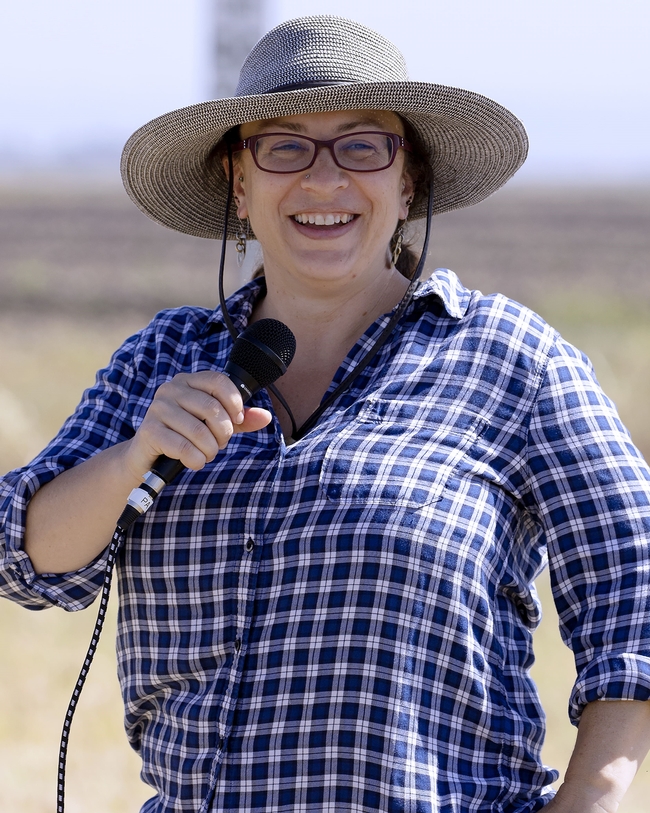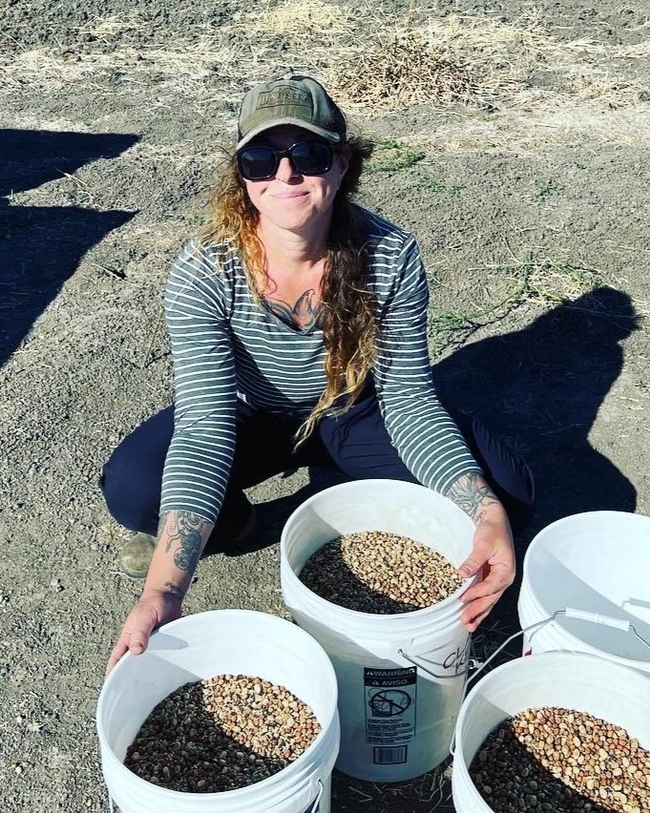Posts Tagged: SGMA
Drought focus of Water Resources IMPACT magazine special issue
UC ANR experts address emotional toll of drought
Preparing the American West for prolonged drought is the focus of a double issue of Water Resources IMPACT magazine. The California Water Commission staff are guest editors for this special open-access edition of the magazine, which is published by the American Water Resources Association.
Faith Kearns, academic coordinator of University of California Agriculture and Natural Resources' California Institute for Water Resources, is among the authors delving into how drought impacts people and the environment and how we can better prepare for the inevitable.
The first issue, published on Feb. 14, focuses on water scarcity issues confronting California and the ways these issues affect different sectors.
In “Trauma, Care, and Solidarity: Addressing the Emotional Toll of Chronic Drought,” Kearns highlights the effects of drought on mental health. She points to the spike in suicide hotline calls when wells ran dry in Southeast Asian communities in California's Central Valley.
By listening to Southeast Asian farmers, Ruth Dahlquist-Willard and Michael Yang of UC Cooperative Extension were able to “lighten the load” for them by providing pragmatic support, Kearns writes.
“The scale of some of these highly emotional issues – drought, wildfires, climate change – can make them seem incredibly difficult, if not impossible, to deal with,” Kearns said. “At the same time, they are affecting everyone living in the western U.S. on a daily basis. I wanted to highlight and provide models based on work that people – whether they are researchers, clinical psychologists, or Cooperative Extension advisors – are doing right now to ease the way.”
The authors who contributed to the double issue are a diverse array of Tribal experts, academics, nongovernmental organization thought-leaders, water managers and water policy influencers, each of whom brings their own perspective on the topic of drought. Their expertise and perspectives in climate science, water policy and water management will help inform drought-related decision-making and support policies that better prepare the state to thrive during periods of prolonged water scarcity.
In addition to Kearns, the first issue includes articles contributed by:
- Samantha Stevenson, University of California, Santa Barbara
- Jay Lund, University of California, Davis
- Ron Goode, North Fork Mono Tribe
- Andy Fecko, Placer County Water Agency
- Jeff Mount, Public Policy Institute of California, and Ted Grantham, University of California, Berkeley/UC Cooperative Extension
- Nat Seavy and Karyn Stockdale, National Audubon Society
- Kjia Rivers, Community Water Center
- Cannon Michael, Bowles Farming
- Michelle Reimers, Turlock Irrigation District
The January/February edition of Water Resources IMPACT magazine can be accessed, free of charge, on the American Water Resources Association website at https://www.awra.org under “Publications.”
The second issue, to be published in March, will focus on drought response, considering the options for adaptation. This two-part series complements the Commission's work on strategies to protect communities and fish and wildlife in the event of a long-term drought.
Your water-efficient landscape doesn’t have to be barren
UC climate-ready landscape trials identify low-water yet attractive plants
Good news: roses can be a part of your water-efficient landscape. Lorence Oki, UC Cooperative Extension environmental horticulture specialist in the UC Davis Department of Plant Sciences, identified rose cultivars that remain aesthetically pleasing with little water.
Oki is the principal investigator of the Climate-Ready Landscape Plants project, which may be the largest irrigation trial in the western U.S., and the UC Plant Landscape Irrigation Trials (UCLPIT), the California component of that project. These projects evaluate landscape plants under varying irrigation levels to determine their optimal performance in regions requiring supplemental summer water.
“There are some assumptions that pretty plants use a lot of water, like roses,” Oki said. “Everyone thinks they need a lot of water, but we've found some that don't, and they still look great. A water-efficient landscape doesn't need to look like a Central Valley oak-grassland in the summer. It can look really attractive.”
In 2021, Oki's team at UC Davis identified Lomandra confertifolia ssp. pallida "Pom Pom" Shorty and Rosa "Sprogreatpink" Brick House® Pink as two of the best low-water plants in the trial.
“The useful tip or information that is shared at the end of each trial is the selection and designation of plants as Blue Ribbon winners. These are the plants that looked good with an overall rating of 4 or higher throughout and were on the low (20%) water treatment,” said Natalie Levy, associate specialist for water resources, who manages the project at the UC ANR South Coast Research and Extension Center.
How plants earn a blue ribbon
Each trial year, the selection of new plants is based on research recommendations and donated submissions from the nursery industry. The landscape plants are trialed in full sun or 50% shade cover.
Irrigation treatments are based on the rate of evaporation and plant transpiration (evapotranspiration) measured through a local California Irrigation Management Information System (CIMIS) weather station that provides a reference evapotranspiration (ETo) rate.
Three levels of irrigation are provided to the plants equal to 20%, 50%, and 80% of ETo. The volume of water applied is the same at each irrigation based on soil characteristics, but the interval between applications varies with weather and the treatment. Using this method, irrigations for the 20% treatment are less frequent than the 80% treatment.
“The 20% treatment during the 2022 trial was irrigated an average of once per month while the 80% treatment was irrigated weekly,” explained Levy.
During the deficit irrigation trial, monthly height and width measurements are taken to determine the plant growth index. Monthly qualitative aesthetic ratings on a scale of 1 to 5 are determined for foliage appearance, flowering abundance, pest tolerance, disease resistance, vigor and overall appearance.
A second round of flowering abundance and overall appearance measurements are also taken to capture more of the blooming period. For example, UCLPIT identified in the 2020 trial at South Coast REC that the "Apricot Drift" rose had a mean overall appearance score of 3.5 out of 5, deeming it “acceptable to very nice” and a low water use plant within the Water Use Classification of Landscape Species or WUCOLS guide.
Project expands options for landscape planting
“(WUCOLS) only has 3,500 plants in it. There are guesses that there are close to 10,000 cultivars in urban landscapes in California, if not more,” said Oki. “WUCOLS also didn't have numerical ratings. Instead, you'll see verbal ratings like ‘low water use' or ‘high water use.'”
The UCLPIT project has not only developed numerical recommendations for irrigation, but it has also added new landscape plants that are compliant with California's Model Water Efficient Landscape Ordinance. In fact, UCLPIT's data is one of the few sources that can be used to supplement WUCOLS.
Geographic diversity of trial sites adds to knowledge base
In addition to UC Davis and South Coast REC in Irvine, the trials have expanded beyond California as the Climate-Ready Landscape Plants project and is in progress at Oregon State University, University of Washington, University of Arizona and Utah State University thanks to a USDA/CDFA grant awarded in 2020.
Lloyd Nackley, associate professor of nursery production and greenhouse management at Oregon State University, is the principal investigator of the trial in the Portland metro area, which is entering its third year.
“People know that there are drought tolerant plants, but there are many. We're trying to highlight lesser known or newer varieties. And even though the trial is three years, most gardeners would hope that their garden lasts longer than that,” said Nackley.
One of the observations that Nackley recalls is of the Hibiscus Purple Pillar plant. Unlike the trial at South Coast, the Purple Pillar did not perform well in Oregon in the spring.
“It wasn't until August that we saw the plant bloom and begin to look like what we saw from South Coast in April,” Nackley said.
Ursula Schuch, horticulture professor and principal investigator of the trial taking place at the University of Arizona, was also surprised at the range of performance among different plant types and the effects of irrigation, heat and temperature.
“This research will reassure green industry professionals that they can stretch their water budget to successfully cultivate more plants, watering them according to their needs instead of irrigating every plant according to the highest water-using plants,” said Schuch.
Although research is only conducted in the West, the hope is that there will be trials in other regions of U.S.
Doing so would yield comprehensive information about the plants and their performance in different climates. As extreme weather events persist in the U.S., disease pressure and risks do too. Trials throughout the country would provide location-specific data regarding disease susceptibility.
To learn more about the UCLPIT research project, visit https://ucanr.edu/sites/UCLPIT/
Plant Suggestions for your Rain Garden
Last week in this column we suggested creating a swale in your home garden to capture rain and practice effective water conservation. If you have been inspired to start planning a swale, you may be looking forward to the fun of selecting plants for this...
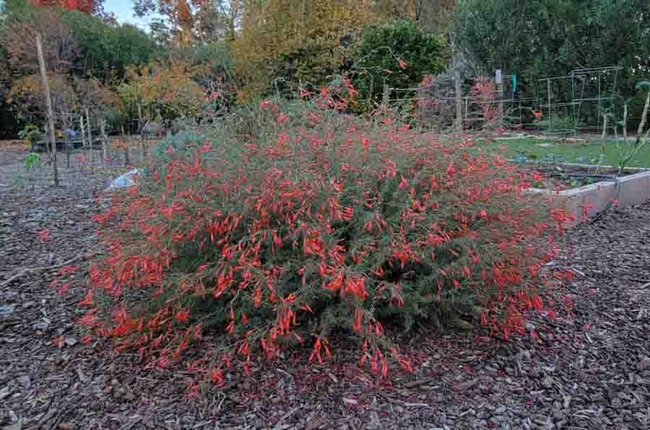
California fuchsia shrub, Jeanette Alosi
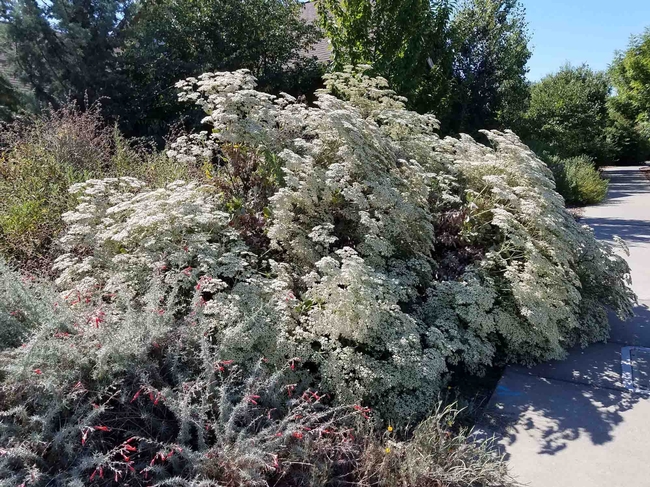
St. Catherine’s Lace buckwheat in bloom, Jeanette Alosi
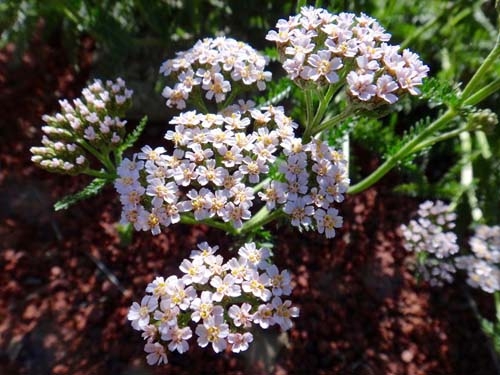
Yarrow-achillea millefolium whilte, Brent McGhie
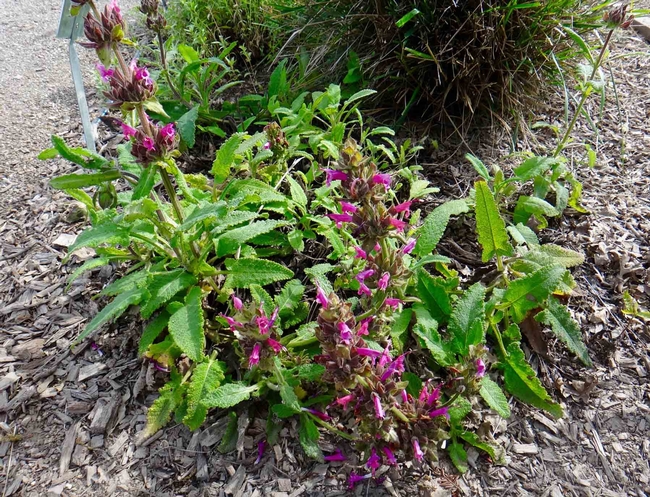
Hummingbird-sage, Brent McGhie
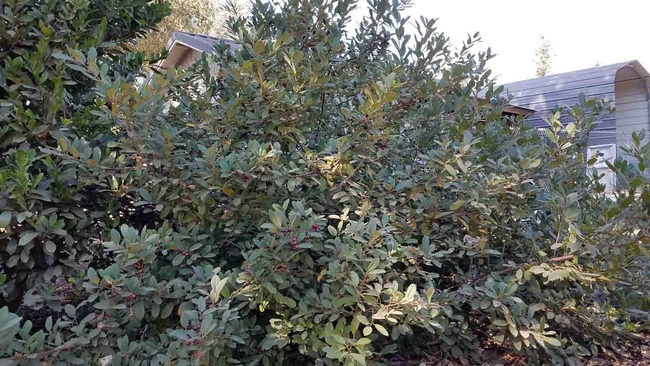
Eva Case' coffeeberry, Jeanette Alosi
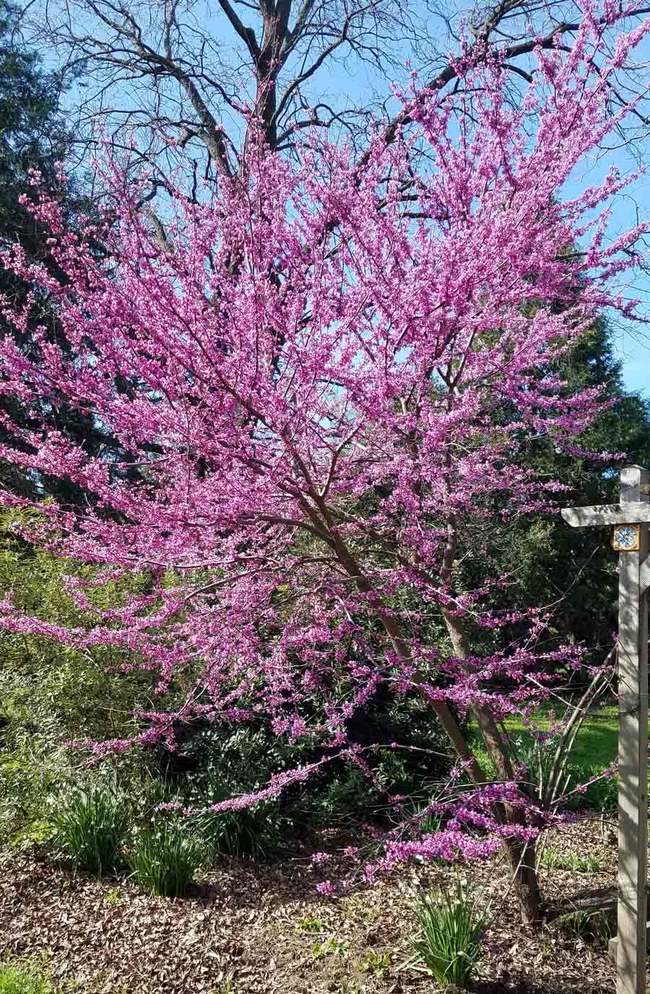
Redbud in bloom, Jeanette Alosi
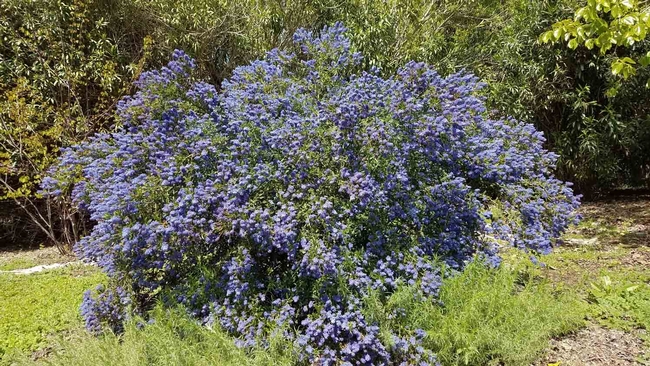
Ceanothus 'Concha,' Jeanette Alosi
Now is the time to plant climate-ready trees, says UCCE researcher
In a drought-prone region like Southern California, working with Mother Nature is not only wise but necessary, according to Janet Hartin, UC Cooperative Extension horticulture advisor for Los Angeles, San Bernardino and Riverside counties, who studies climate-ready trees.
In 2020, Governor Newsom launched the California Climate Action Corps, empowering Californians to protect their communities from the impacts of climate change. Newsom's call to action emphasizes the need for long-term and sustainable solutions like Hartin's research, which urges Southern California to care for existing trees and plant new ones.
In collaboration with the U.S. Forest Service and other UC Cooperative Extension scientists, Hartin is amid a 20-year research study identifying trees suitable for California's different climate zones. Her work provides a comprehensive understanding of trees and their benefits related to human and environmental health, particularly as Californians navigate climate change's evolving challenges.
One of these concerns is urban heat islands. UHIs are areas in which heat is reradiated from paved concrete or asphalt surfaces. In cities covered in asphalt, like Los Angeles, average temperatures can become six degrees hotter than surrounding areas.
To reduce urban heat islands, she has been working with community organizations to plant trees. In March, for example, Hartin teamed up with the Inland Empire Resource Conservation District to increase tree canopy in the Inland Empire.
“We've collaborated extensively with her over the years, and we knew Janet had been developing a regionally scaled concept for connecting community members to climate-appropriate trees, alongside access to technical assistance from regional UCCE Master Gardeners to ensure long-term tree health and survival,” said IERCD District Manager Mandy Parkes.
Trees keep cities cool
To keep the city cool, some Los Angeles neighborhoods are repainting pavements with reflective coating. According to a 2020 study published in Environmental Research Letters, reflective coating can decrease pavement temperatures up to 10 degrees. As helpful as this is, augmenting urban landscapes to include heat-, drought- and pest-resistant tree species, whether native or not, can significantly reduce the impacts of urban heat islands too.
“Trees can cool impervious surfaces by 40 to 65 degrees,” Hartin said. During a 2021 study, in May and June Hartin discovered that unshaded asphalt could be more than 60 degrees hotter than shaded asphalt during late spring and early summer in inland and desert cities.
Other than providing shade, trees are effective at deflecting the sun's radiation and cooling the atmosphere through evapotranspiration. Given that they absorb and store carbon as well, trees lessen the impacts of pollution from fossil fuels.
“A well-tended mature landscape tree can absorb 40 tons of carbon over its lifespan,” said Hartin.
In a 2021 blog post, Hartin suggests trees be selected based on their adaptation to the “micro-climate” in each particular landscape, noting factors to consider like shade, proximity to buildings, space needs below and above ground, soil type and water source. She also recommends the Sunset Western Climate Zone maps for reference, noting that they are “more precise than USDA zones for our warmer climates.”
Based on the study with the U.S. Forest Service examining the performance of 12 species of underplanted but promising landscape trees at UC Riverside, favorable candidates include bubba desert willow and maverick thornless honey mesquite for their drought resistance, and red push pistache for its drought and heat resistance.
Tamara Hedges, executive director of UC Riverside Palm Desert Center and member of the Board of Directors for the Oswit Land Trust, agrees that trees are important in our fight against climate change:
“Through our partnerships with the UC California Naturalist and the Master Gardener Programs and many other nonprofits in the Coachella Valley, natural ecosystems are being protected and expanded and built environments cooled through the planting of appropriate tree species. These UC/USFS studies go a long way in identifying new underrepresented tree species."
General tips for planting
For California, planting in early fall through late winter provides ample time for trees to establish a strong root system before enduring the summer heat. Doing so also means that natural rainfall can fulfill water needs, as opposed to solely relying on irrigation systems.
Unlike newly planted trees, mature trees should be watered infrequently but deeply. Watering too often can reduce the level of oxygen in the rootzone and result in waterlogged soils prone to crown and root rots.
During the fall, trees only need about 15% of the water they would require in the summer. When watering, keep the tree trunk dry. Because the roots of the tree grow outward and are usually a foot deep into the ground, Hartin recommends watering the area around the trunk rather than the trunk itself. This will also help avoid water waste.
“Trees not adapted to the climate they're planted in and not receiving proper care are much more susceptible to invasive pests like shothole borers and diseases,” said Hartin. “Even the loss of one front yard tree can significantly reduce shade, increase the surrounding temperature, and diminish energy savings.”
New tool calculates crop rotation costs, benefits for California rice growers
UC researchers studying how practice can help farmers manage drought, pests, other challenges
Due to severe water shortages, rice acres planted in California plummeted by 37% from 2021 to 2022, according to numbers released recently by the U.S. Department of Agriculture's National Agricultural Statistics Service. But now, thanks to University of California researchers, growers have a new tool they could potentially use to cope with droughts and other environmental and socioeconomic changes.
A crop rotation calculator provides farmers in the Sacramento Valley – where 97% of California rice is grown – with projections on the economic impacts of transitioning their fields from rice into four less water-intensive crops: dry beans, safflower, sunflower or tomato.
The tool represents an initial attempt to address the dearth of research on rice crop rotation in California, while giving growers much-needed, science-backed data on whether the practice would make financial sense for their farms.
“I believe more rice growers could benefit from the many advantages of crop rotation, and this new tool is an excellent first step by the UC to help growers look into making such a transition,” said George Tibbitts, a Colusa County rice farmer.
Funded in part by the USDA National Institute of Food and Agriculture, through the Western Integrated Pest Management Center, the calculator is a collaborative effort of UC Agriculture and Natural Resources, UC Integrated Pest Management and UC Davis to fill a major gap in rice research.
“I do think there are people who would have tried rotational crops in the past, but it's just so unknown, we didn't have anything we could give them and be like, ‘Hey, this is the recommended crop for your area,'” said Whitney Brim-DeForest, UC Cooperative Extension rice advisor. “This tool gives them some preliminary data they can use to make a more informed decision.”
Crop rotation a potential boon to growers, environment
UC Davis doctoral student Sara Rosenberg and Brim-DeForest, alongside other members of the UC rice research team, surveyed California rice growers in 2020 on their experiences with and perceptions of crop rotation. Although the practice is rare in the Sacramento Valley (only an estimated 10% of rice acreage is under rotation), some farmers reported benefits that could be crucial in a water-scarce future.
“From having conversations with growers who do rotate, one of the biggest benefits they describe is their flexibility in times of drought, where they can keep producing on their land when there isn't enough water to grow rice,” said Rosenberg, noting that crop rotation could be one option in a “toolbox” of strategies that growers also use to manage fertilizer price shocks, herbicide resistance and other challenges.
During the ongoing drought that caused about half of California's rice acreage to go fallow in 2022, Tibbitts said his water district was only able to allocate 10% of his usual allotment.
“With such a limited supply, it would have been tough to grow even one field of rice,” he said. “But it was enough water so that we could rent two of our fields to a tomato grower – tomatoes under drip irrigation use much less water than a flooded field of rice. We were also able to grow one field of sunflowers, which doesn't need any irrigation at all if you can plant the seeds into existing moisture in the early spring.”
While drought is one motivating factor to rotate crops, Tibbitts said that on principle he avoids planting all his acreage in rice and “not have all (his) eggs in one basket.”
“My primary motivation for rotating into and out of rice has been to help with weed and disease control,” he added. “Crop rotation is a primary tool of IPM (integrated pest management), and I feel it has helped me greatly over the years.”
According to Brim-DeForest, rotating cropping systems can allow for the use of different weed control tools, such as different herbicide modes of action, and different cultural controls such as tillage, reducing the chances of selecting for herbicide-resistant weeds – an increasingly pervasive issue in rice systems.
Rosenberg noted that, in some situations – and depending on the crops in rotation – the practice can also disrupt the life cycles of insects and diseases and potentially improve soil structure and increase nutrient cycling and uptake, which may lead to a reduction in inputs such as fertilizer.
More research on crop diversification needed in rice systems
The benefits of crop rotation for California rice growers are largely theoretical and anecdotal, however, so the UC rice team is looking to add evidence-based grounding through a variety of studies – from looking at long-term effects on soil health indicators to testing various cover crops (which may deliver some benefits of diversification, similar to those of rotation).
“In California, there is no quantitative data on crop rotation in rice,” said Brim-DeForest. “You'd think after a hundred and some odd years (of UC agricultural research), all the research would have been done, but, no – there's tons still to do.”
Through interviews with Sacramento Valley growers, researchers found that cost was frequently mentioned as a barrier to trying crop rotation, along with incompatible soil conditions and a lack of equipment, knowledge and experience.
To help clarify those economic uncertainties, the new calculator tool allows growers to enter baseline information specific to their circumstances – whether they rent or own their own land, whether they contract out the work to plant the rotational crop, and other factors. The calculator then generates potential costs and benefits of staying in rice versus rotating to dry beans, safflower, sunflower or tomato, during the first year and in an “average” year for those crops.
The upfront costs of rotation during “year one” can be daunting. Therefore, the tool only focuses on a short-term profitability perspective. Researchers are currently working on longer term modeling for crop rotation – incorporating the possibility of reduced herbicide use over time, and under different crop yield scenarios, for example – that could significantly change the growers' calculus.
“You could actually be profitable in the long term, whereas this first, short glimpse is showing you a negative,” said Rosenberg.
In addition, thanks to collaboration with the UC IPM team, the rice rotation calculator is an evolving tool that will be continually improved based on user feedback and additional data. Brim-DeForest also said that it could be adapted to other cropping systems – for example, alfalfa going into another rotational crop.
The rice calculator tool can be found at: https://rice-rotation-calculator.ipm.ucanr.edu/.
Other contributors to the project include Bruce Linquist, Luis Espino, Ellen Bruno, Kassim Al-Khatib and Michelle Leinfelder-Miles of UCCE; Cameron Pittelkow of UC Davis; as well as UC IPM team members Chinh Lam, Tunyalee Martin and Hanna Zorlu; and the California rice growers and industry members who participated in the research.



